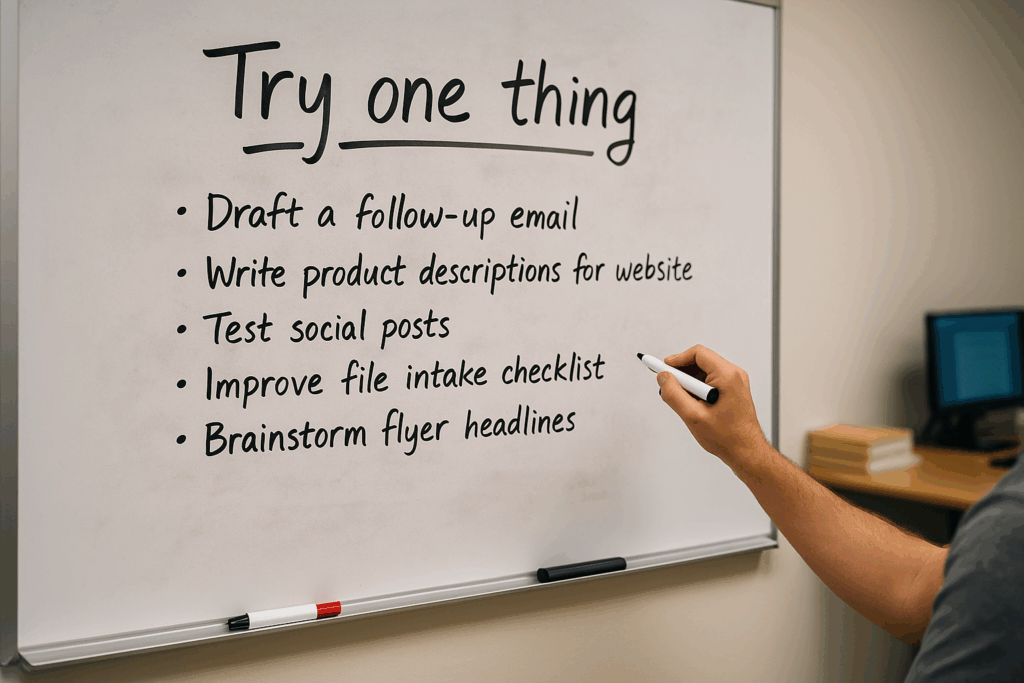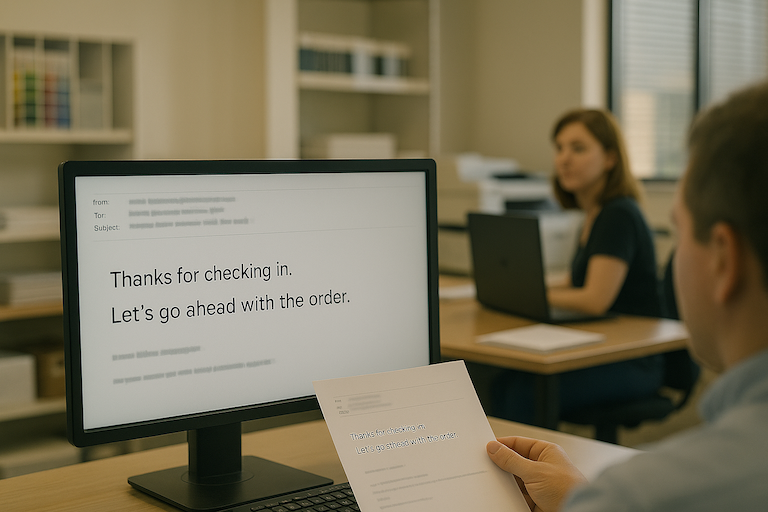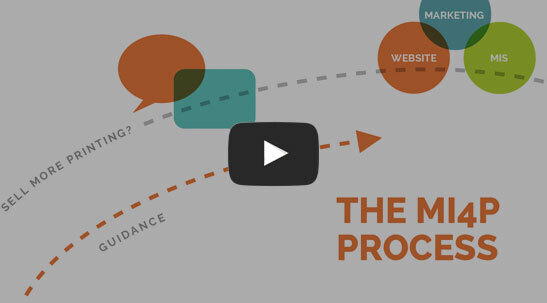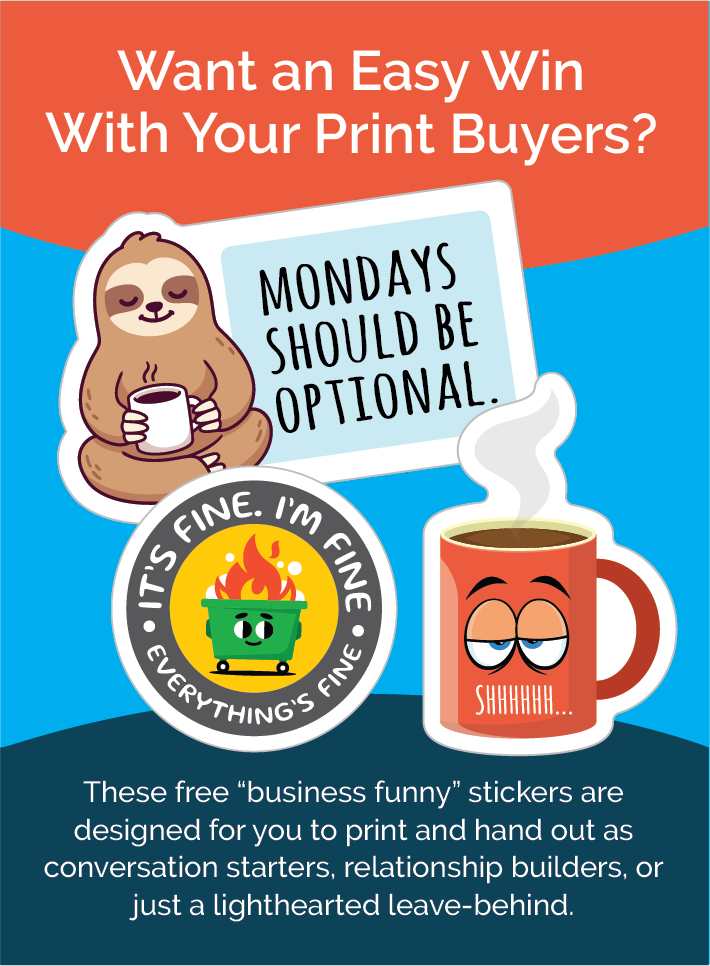You’re Not Getting Replaced, You’re Getting Ready: Part 4 of The AI Success Journey for Printers

From Curiosity to Conversation If you’ve been following Clay’s story for the last few months, you’ve seen how his first experiment with AI gave him something every print shop owner needs—confidence. But confidence isn’t enough. If a business is going to grow, change has to become a conversation. This month, in part 4 of The AI Success Journey for Printers, Clay starts talking with his team about AI… and finds out what they’re really thinking. “Let’s Talk About AI” Monday morning at Riverbend Print & Sign started like any other: coffee, install updates, a quick recap of orders going to production… but then Clay did something new. “Before we wrap up this meeting, there’s one more thing I want to talk about,” he said. “Let’s spend a few minutes on AI.” The room shifted. Jess glanced at Rick. Rick looked down at his notes. Someone exhaled a little too loudly. Maybe this was a mistake, Clay thought. They’re already picturing robots in the breakroom. But he kept going. Calm. Measured. “Last week, I used a free AI tool to help write a follow-up email to a customer who hadn’t responded. That one message turned into something I’m now doing regularly—a simple
What AI Can (and Can’t) Do for Print Shops: Part 3 of the AI Success Journey For Printers

Start small. Start safe. See what happens. Clay’s not diving into the deep end. He’s not trying to overhaul his whole business. He’s just doing what I recommend every printer do when they’re curious about AI: start small, start safe, and see what happens. Let’s continue with Part 3 of Clay’s story. A blank screen and a blinking cursor It was a quiet Saturday morning at Clay Morgan’s house. The shop was closed. His wife was out running errands. And Clay was sitting at the kitchen table, laptop open, coffee in hand. He stared at the prompt box on a free AI tool he’d bookmarked weeks ago. What am I even supposed to ask this thing? He thought about the customer who had gone silent after receiving a quote for two, 4’x8’ signs. Nothing unusual. But still, it bothered him. Okay, let’s keep it simple, he muttered, and typed: “Write a follow-up email to a customer who hasn’t responded in two weeks.” The tool responded almost instantly with a perfectly formatted email. Dear Valued Customer, We hope this message finds you well… Clay squinted at the screen. I’d never send that. It was professional, sure. But it didn’t sound like him.
When “Fine” Starts to Feel Like Falling Behind: Part 2 of the AI Success Journey For Printers

When I shared Clay’s story last month, I described him as fictional but built from real conversations with printers just like you. That’s still true. Clay’s not here to tell you what to do. He’s here to help you see what’s possible. And I’m here to walk with you as you figure out what your own AI journey might look like at your own pace, one step at a time. This month, we check in on Clay as something begins to shift. His shop is steady. His people are solid. But deep down, he’s wondering: What happened to the spark? Same Shop, Different Feeling Monday morning at Riverbend Print & Sign looked exactly the same as it had for years. Clay Morgan walked into his main location at 7:58 a.m., coffee in hand, phone already buzzing. Jess from the front desk gave him a quick update on the delayed install at McKenzie Automotive. Production had run into a material issue, but the customer was still “fine with it.” Over at the cutter, his lead tech asked about reprinting a seasonal banner they’d done last year. “Check the archive, it’s probably there,” Clay said, half-turned toward his screen. It was all normal.
The AI Wake-Up Call: Part 1 of the AI Success Journey For Printers

AI Didn’t Just Change My Mind, It Refocused My Mission When I first got serious about exploring AI, I looked at it through the lens I knew best: marketing. How could it help us produce better, more effective content for printers? That seemed like the right-sized question to ask. But I quickly discovered I was thinking too small. What started as a marketing experiment became something much more. The deeper I went, the more I realized that AI wasn’t just another content tool, it was a business tool. One that could reshape operations, communication, decision-making, hiring, forecasting. I wasn’t looking for a shift in my professional identity, but I found myself re-energized by what I was learning. AI didn’t overwhelm or distract me; AI refocused me. That shift didn’t move me away from the work I’ve always done with printers. It brought me closer to it with more precision and sharper alignment with our mission: to help printers sell more printing. The industry I care about is entering a new chapter, and I want to help printers step into it with clarity, confidence, and control. Which brings me to someone I’d like you to meet. Meet Clay Morgan Clay Morgan
Small Orders, Big Decisions: Turning Small Jobs into Big Wins

Previously, Sam Lewis tackled the challenge of managing client expectations after implementing minimum charges at Print Perfect. With the policy now in place, Sam begins looking ahead to new opportunities. Instead of viewing small jobs as obstacles, he starts to see them as stepping stones for growth. This month, Sam explores ways to build deeper relationships and turn low-margin interactions into gateways for larger, more profitable projects. Can these small wins pave the way for big success? Part 4: Small Orders, Big Decisions: Turning Small Jobs into Big Wins Sam had spent weeks refining Print Perfect’s approach to minimum charges and client communication. But as he looked over his books, he noticed that while the small jobs had become more manageable, they still weren’t driving growth. “There has to be a way to turn these into something more,” he thought, pondering how to make low-margin work a stepping stone for bigger projects. Finding Value Beyond the Profit Margins One afternoon, Sam discussed his thoughts with Laura. “I’m wondering if we’re missing out on opportunities with some of these small jobs,” he began. “If we could turn these clients into repeat customers for larger projects, that could really make a difference.”
Small Orders, Big Decisions: Managing Client Expectations

In last month’s article, Sam Lewis began setting minimum charges for Print Perfect, a necessary but challenging step to sustain his business. Now, he faces an equally tough task: communicating these changes to his loyal clients. As concerns and questions arise, Sam learns that managing expectations is just as critical as implementing new policies. In this installment, we see how Sam navigates client conversations with transparency and tact, working to preserve trust while staying true to his business goals. Since implementing minimum charges, Sam had mixed feelings. Some clients understood and appreciated the change, but others raised concerns. Now, he faced the next challenge: how to communicate these changes in a way that would keep clients satisfied without undermining his business goals. One morning, as he prepared his usual cup of coffee, Laura approached him. “Sam, I think we need a consistent way to explain these new charges. We’ve been doing it one conversation at a time, and it’s a bit overwhelming.” Sam nodded, “You’re right. It’s time we establish a clear approach.” Building a Communication Strategy Sam decided to craft a message he could use across all client interactions. He drafted an email that outlined the reasons for the
Small Orders, Big Decisions: Setting Boundaries with Minimum Charges

Last month, we met Sam Lewis, owner of Print Perfect, as he began to face the financial strain caused by small, low-margin print jobs. With his shop’s resources stretched thin, Sam realized that change was necessary. Now, he takes his first step toward addressing the issue: introducing minimum charges for small jobs. In this article, Sam navigates the delicate balance between setting boundaries and preserving the relationships that make his business special. Will his clients understand, or will the change test their loyalty? Sam had been contemplating it for days: how do you set minimum charges without alienating loyal customers? He glanced over at Laura, his production manager, who was already juggling a backlog of small jobs, each barely covering costs. “Laura,” he began, “I think it’s time we take action on those minimum charges.” Laura nodded. “I agree. We’re stretched too thin, Sam. But we need a clear way to communicate this so clients understand why it’s necessary.” Sam paused, deep in thought. “I don’t want them to think we’re just hiking prices. How do we help them see the value behind it?” Crunching the Numbers Determined to dig deeper, Sam decided to analyze trends over the past
Sell More Printing: When Easy is Too Easy

Welcome back to another edition of Sell More Printing, where we explore real-world sales and marketing strategies that you, as a printer, can adapt to boost your business. This month, we dive into a surprising lesson from the world of baking—yes, baking!—to uncover how making things easy for your print buyers can sometimes be too easy and what you can do to strike the perfect balance. The Cake Mix Conundrum: When Convenience Backfires Let’s take a trip back to the 1940s when the introduction of cake mixes revolutionized the baking world. Initially, these mixes were designed to be incredibly simple—just add water, and you’d have a cake ready to bake. But to everyone’s surprise, sales were disappointing. It turns out that people felt a sense of embarrassment when they realized how little effort it took to “bake” the cake. They wanted to feel like they had played a real part in the process. Enter the genius tweak: manufacturers altered the formula, so bakers needed to add an egg and some oil. Suddenly, sales soared. Why? Because this small bit of involvement allowed people to feel like they were truly baking rather than just using a shortcut. This same principle can apply to




